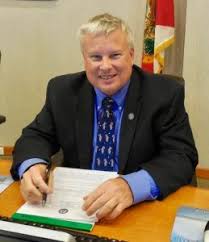Dale Martin
City Manager
Fernandina Beach
April 13, 2018 12:00 a.m.

The Florida League of Cities has released its 2017 State of the Cities report. This brief (fifteen pages) report offers some interesting statistic perspectives about Florida cities.
The five most populous cities each have at least 250,000 residents: Jacksonville (878,456), Miami (456,089), Tampa (365,124), Orlando (271,752), and St. Petersburg (259,906). Overall, twenty-one cities have a population of at least 100,000. The seven least populated cities each have less than one hundred residents: Indian Creek (84), Lazy Lake (24), Lake Buena Vista (22), Bay Lake (16), Marineland (6), Westlake (5), and Weeki Wachee (5).
The median population of cities in Florida is 5,755. 44 cities have at least 60,000 residents, 89 cities have between 15,000 and 60,000. Our population falls just outside of this upper third of total Florida cities. Slightly less than fifty percent of Florida cities (46%) have populations of less than 5,000. Using those metrics, we are not a small city in relation to our sister Florida cities.
Approximately two-thirds of Florida cities are similarly governed- a Council-Manager form of government led by a five-member governing body. The size of governing bodies ranged from three people to nine or more. The terms of office for the governing body are slightly more varied, with about fifty percent serving four-year terms (as in Fernandina Beach), seventeen percent serving three-year terms, and twenty-seven percent serving two-year terms (the responses do not total 100% due to non-responses). Most municipal elections are conducted in November, with such elections otherwise occurring in March and April.
Local governments are funded through a variety of means. The most common funding for Florida cities is property (ad valorem) taxes (utilized by 94% of cities), communications services taxes (89%), local business taxes (87%), and franchise fees (83%). Other commonly used fees to fund services include stormwater improvement fees (49% of cities), solid waste and recycling fees (38%), and fire service fees (37%).
The number of Fernandina Beach employees is in-line with other similarly sized communities- approximately one employee for every ninety-two residents. That ratio is the highest ratio among cities of all sizes- the ratio otherwise ranges from one employee per ninety-six residents (cities of less than 5,000) to one employee for every 117 residents (15,000-60,000).
Technology is playing a larger role now, with nearly three-quarters of cities using social media (Facebook, Twitter) as an alternative to traditional websites to communicate with residents. Social media is used to notify residents of events (87%), emergencies (83%), meetings (63%), and traffic and crime (47% each). Less utilized than social media, but for primarily the same purposes, are text notifications (40% of cities) and mobile applications (20%).
Fernandina Beach provides similar city-run services when compared with others. A majority of cities offer parks (91%) and recreation centers (59%). Smaller percentages offer libraries (37%), cemeteries (33%), beaches (24%), and marinas (16%). Fernandina Beach also provides utility services that are not provided in all Florida communities: water (67% of cities), wastewater (60%), stormwater (59%), and solid waste collection (35%). Less common utilities include reclaimed water (26%), electricity (7%), and natural gas (6%). Only 42% of Florida cities provide a combination of water, waste water, and stormwater services.
With regard to public safety, 91% of Florida cities provide police services (either in-house or via contracted services), 86% provide fire services, and 68% offer emergency medical services.
It is commonly thought that every city is unique. In some instances, such as environment, attractions, and other features, they are, but in how cities actually operate, Florida cities have much in common with each other. It is more common to have differences between cities in different states. It would be interesting for me to delve into how several communities (of similar 12,000 population) that I served in three different states expanded in the early 2000s, contracted around 2010, and have since recovered. The three states all had differing philosophies of taxation and government services, so such a review could be intriguing in order to be better prepared for future financial changes.
For more information (including previous reports) about the State of the Cities report, please visit www.floridaleagueofcities.com/research/data-statistics/state-of-the-cities.

Elections in Marineland, Westlake and Weeki Wachee with only 5 – 6 residents must be quite interesting.